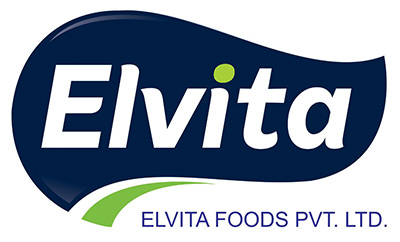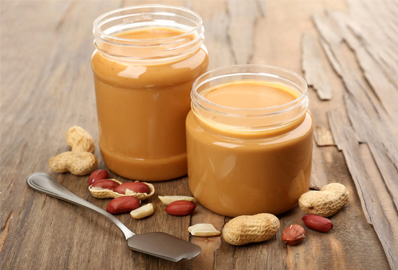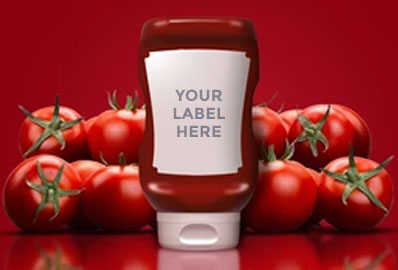Peanut butter is a relatively unprocessed food. It’s basically just peanuts, often roasted, ground until they turn into a paste. Peanut butter is a spread made from dry roasting peanuts. It is most often eaten on toast or in a sandwich but can also be used as an ingredient. The roasting process acts to boost the peanut’s flavour potential, raising the proportion of oil compared to solids and minimizing excess moisture. The roasted nuts are then ground into a paste before salt, sugar or artificial sweeteners are added. There are many different types of peanut butter and most people have a preference for either the smooth or the crunchy variety.Peanut butter is comprised of about 25% protein, making it an excellent plant-based protein source.
Among the types of peanut butter are
- conventional peanut butter, which consists of up to 10% salt, sugars, and hydrogenated vegetable oil
- crunchy or chunky peanut butter, which includes coarsely-ground peanut fragments to give extra texture
- smooth peanut butter, in which the peanuts are ground uniformly, possibly with the addition of corn syrup and vegetable oil, to create a thick, creamy texture like butter
- natural peanut butter, which normally contains only peanuts and salt and is sold without emulsifiers that bind the peanut oils with the peanut paste, and so requires stirring to recombine the ingredients before consumption
- organic and artisanal peanut butters, whose markets are small, artisanal peanut butter is usually preservative-free, additive-free
Peanut Butter Production process
Planting and Harvesting of peanuts
Peanuts are planted in April or May and harvested in September. The peanut grows as a plant that blooms yellow flowers. The flower petals wilt after a period of time and signal the underground growth of the nuts. During harvesting, peanuts are removed from vines by portable mechanical pickers and are delivered to warehouses for cleaning. During the cleaning process, blowers remove dust, sand, vines, stems, leaves, and empty shells.
Shelling
Shelling is the process of removing the outer covering of the nuts. During this procedure, peanuts are passed between a series of rollers that crack them. The cracked peanuts are then repeatedly passed through screens, blowers, magnets, and destoners. There, they are shaken, gently tumbled, and air blown, until all the shells and rocks are removed. After shelling, the peanuts are graded for size, color, defects, and broken skins. The peanuts with defects are discarded while the healthy ones are packaged and ready for processing.
Dry Roasting
Dry Roasting is a process by which heat is applied to dry foodstuffs without the use of oil or water as a carrier. During roasting, the peanuts travel through a hot air roaster, in a continuous rocking motion. This motion allows the nuts to roast evenly. A photometer indicates when the cooking is complete and after this process, the color of the peanuts change from white to light brown.
Cooling
Peanuts have to be rapidly cooled to stop the cooking process. This helps them to retain moisture and oil, preventing them from drying out. For cooling to occur, the hot peanuts are passed directly from the roaster to a perforated metal cylinder, where a Figure 3- Dry roasting of peanuts. Figure 4- Peanut’s color change from white to light brown after roasting. Some of the skin of the nuts also peels off. large volume of air is pulled through by suction fans. The peanuts are brought to a temperature of 30 degrees Celsius.
Blanching
Blanching removes the remaining outer skins of the peanuts that still remain after roasting by rubbing them through rubber belts. In this process, the kernels are also split in two, and the heart of the peanuts are removed because they have a bitter taste to them. Finally, the blanched nuts are mechanically screened and inspected on a conveyor belt to remove scorched or rotten nuts.
Grinding
After blanching, a grinder grinds the peanuts into a paste while incorporating other ingredients. Peanut butter is usually made by two grinding operations. The first reduces the nuts to a medium grind, and the second to a fine, smooth texture using a very highspeed comminutor. This machine’s combination action of shearing and grinding, transforms the hard peanuts into a smooth paste. As peanuts are being fed into the grinder, about 2% salt, hydrogenated vegetable oil, dextrose, and corn syrup are added to the mixture.
Hydrogenated vegetable oil acts as a stabilizer, which prevents the oil from collecting at the top of the peanut butter jar. Grinding causes the temperature of the peanut butter to go up to 60 degrees Celsius. For this reason, the paste would have to be cooled to 38 degrees Celsius after mixing. Throughout the grinding process, peanuts are kept under constant pressure to prevent the formation of air bubbles, which could cause oxidation. Reducing oxidation increases the shelf life of the peanut butter because a lower oxygen content makes it more difficult for bacteria to thrive and cause spoilage. Furthermore, after grinding, the peanut butter is considered de-aerated, stabilized, and ready for packaging.
Packaging
During packaging, the newly formed peanut butter is delivered into jars in a continuous stream under even pressure. Once again, to prevent oxidation, manufacturers use vacuum packing when the peanut butter jars are being sealed. After it is put into final containers, the peanut butter is allowed to remain undisturbed until it is completely crystallized. Jars are then labelled, placed in cartons, and stored until they are ready to be shipped out to wholesale institutions or customers like yourself!

The process of Peanut Butter Production is a long. First, the peanuts are planted and harvested. Then, they are shelled and dry roasted. Next, they go through a cooling and blanching process which gets the nuts ready for grinding. Lastly, the peanuts are grinded and packaged into jars.
If you are interested in private labelling for peanut butter, you are welcome to leave your request to get the exclusive peanut butter processing solution.
Email: info@elvitafoods.com









